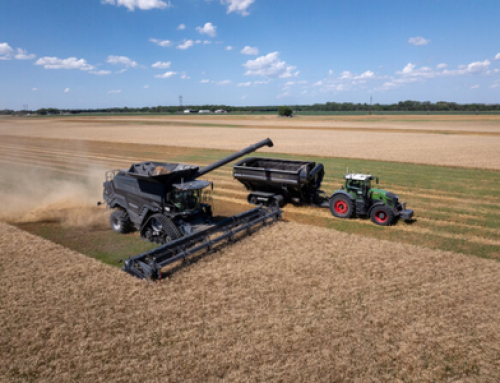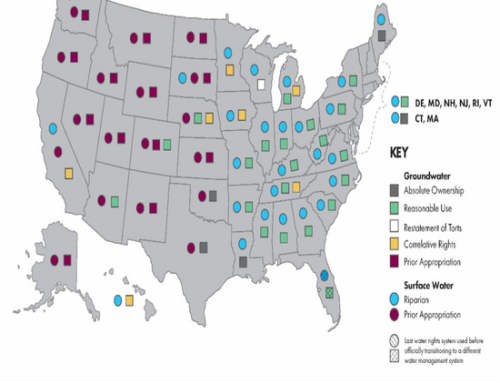Source: National Cattlemen’s Beef Association
ORLANDO, Fla. -The popular CattleFax Outlook Seminar, held as part of the 2024 Cattle Industry Convention and NCBA Trade Show in Orlando, Florida, shared expert market and weather analysis today.
The smallest beef cow inventory in the last 50 years, coupled with historically strong demand, led to the highest average fed cattle and calf prices in 2023. As reduced cattle numbers and beef production continue over the next three years, leverage and profitability will continue to favor cattle producers.
Despite record prices, expansion will likely be delayed once again. Lingering drought, high input costs, limited labor availability, high interest rates, and market uncertainty all serve as headwinds against growing the cowherd. The current cattle cycle anticipates slower and more prolonged expansion, with heifer retention causing a supply decline with expected lows in fed slaughter by 2026. Higher cattle prices and reduced feeding costs will continue to improve margins for cow-calf producers for the next several years, a much-needed improvement to drive expansion as weather patterns allow, according to CattleFax.
After several months watching El Niño’s influence on the global weather pattern, Meteorologist Matt Makens said the El Niño event that placed moisture on the South and Southeast is fading away and La Niña is showing signs of making a rapid return.
“During the next several weeks, we will continue to see strong and wet storm systems move across the central and southern states. Increased odds for snow and cold as far south as Texas will mean possible impacts on calving and wheat,” he said. “Take this moisture now and make the most of it; look for a good start to this grazing season overall but be mindful that drought conditions will increase for the Southern Plains during summer and fall as we see our pattern change quickly.”
As La Niña’s influence grows, increased heat and drought-related issues are expected for the Central and Southern Plains. The moisture pattern will favor the northern tier of states and the Ohio to Tennessee Valleys.
Kevin Good, vice president of market analysis at CattleFax, reported that U.S. beef cow herd declined 2% with inventories at 28.2 million head at the beginning of this year.
“Though drought conditions did improve in many regions, over a third of the cow herd was affected by drought in 2023, causing limited heifer retention and more liquidation in some regions. This will limit growth to the cow herd near-term,” Good said.
Cow and bull slaughter is forecast to be 6.5 million head in 2024, down around 800,000 head, from 2023. CattleFax predicted feeder cattle and calf supplies outside of feedyards will be 1 million head smaller than 2023 at 24.1 million head.
Commercial fed slaughter in 2024 is forecast to decline by 750,000 to 24.8 million head. Cattle on feed inventories began 2024 up about 2% at 11.9 million head. Good noted, “Though inventories may remain somewhat elevated for a few months, they are expected to decline significantly through the second half of the year.”
After about a 1.3-billion-pound decline in 2023, beef production is expected to be down another billion pounds in 2024 to total about 25.9 billion pounds. The decline in production in 2024 will lead to a 1.7-pound decline in net beef supply to 56 pounds per person.
Mike Murphy, CattleFax chief operating officer, forecasted the average 2024 fed steer price at $184/cwt., up $9/cwt. from 2023. All cattle classes are expected to trade higher, and prices are expected to continue to trend upward. The 800-lb. steer price is expected to average $240/cwt., and the 550-lb. steer price is expected to average $290/cwt. Utility cows are expected to average $115/cwt., with bred cows at an average of $2,600/cwt.
“When thinking about what demand looks like, we need to think about what our consumer looks like with the U.S. economy being the driving factor going into 2024,” Good said. “Though inflation has moderated, consumer debt and interest rates, cheaper alternative proteins, and economic uncertainty may limit spending and impact purchasing decisions.”
2024 USDA All-Fresh Retail Beef prices are expected to average $7.90/pound and, while higher beef prices may soften consumer purchasing habits, Good predicted the consumer preference for the quality, consistency and safety of U.S. beef will continue to support relatively strong demand. “Premiums for higher quality beef should remain as consumers have shown a willingness to pay for Choice grade or better beef.”
Global protein demand has continued to rise around the world and tighter global protein supplies should broadly support prices in 2024. U.S. beef exports saw large declines in 2023, down about 13% and another 5% decline is expected in 2024, driven by smaller U.S. production and higher prices. Japan and South Korea remain the top U.S. beef export destinations.
Troy Bockelmann, CattleFax director of protein and grain analysis, said National Dec. 1 on-farm hay stocks were up 6.9% from a year-ago at 76.7 million tons with hay prices averaging $220/ton in 2023. “Another good hay crop needs to be seen in 2024, to help rebuild stocks from the lows in 2022 and return prices to a more historically normal range. The first half of 2024 will likely see prices supported at more elevated levels before dropping by roughly $30/ton following harvest.”
He noted that corn stocks-to-use are at just under 15% and should keep the market below $5.50/bu. with a yearly average price of $5.00/bu. expected. “Overall, when thinking about watch items for 2024, look at March perspectives planting report, soybean exports, and the total principal crop acres.”
On the energy front, Bockelmann said that, for 2024, not much will change. He said crude oil is expected to average around $80/barrel and noted that the geopolitical environment will be the driver of price relative to oil markets.
Randy Blach, CattleFax chief executive officer, concluded the session with an overall positive outlook, and noted that the current cattle cycle will be much slower and prolonged compared to the last as heifer retention has not yet started on a nationwide basis. He expects the peak in cattle prices is likely to occur in 2025-2026 and, in the meantime, industry profitability will continue to swing in favor of the cow-calf producer as excess feeding and packing capacity chases a declining supply of feeder cattle and calves.



